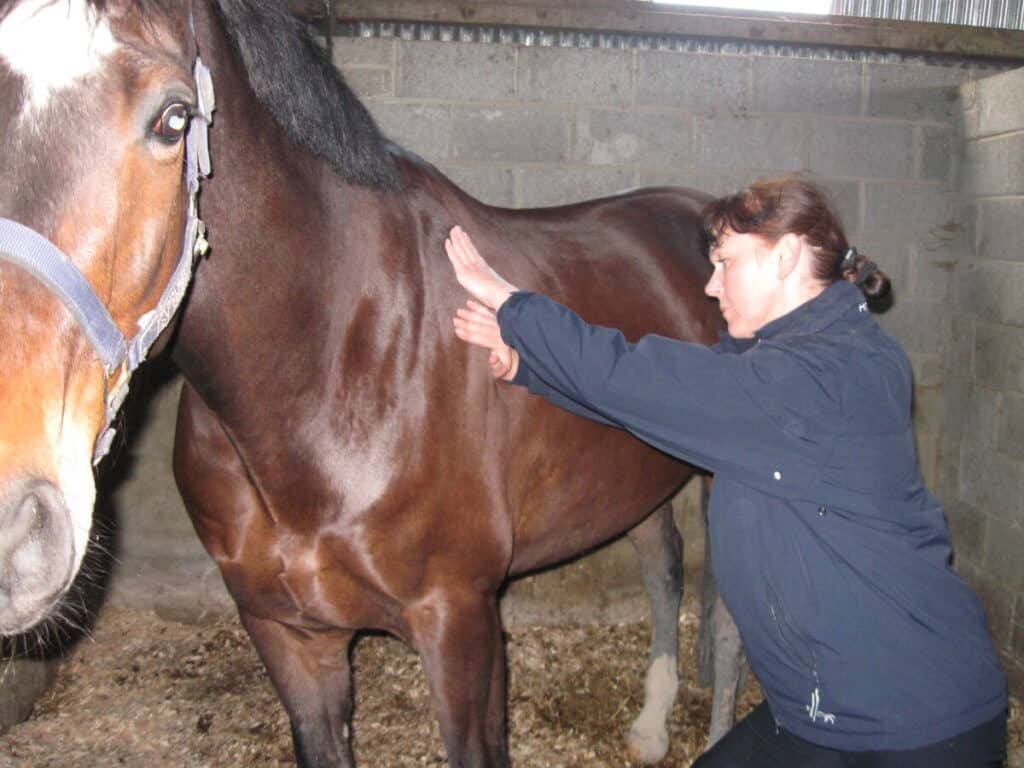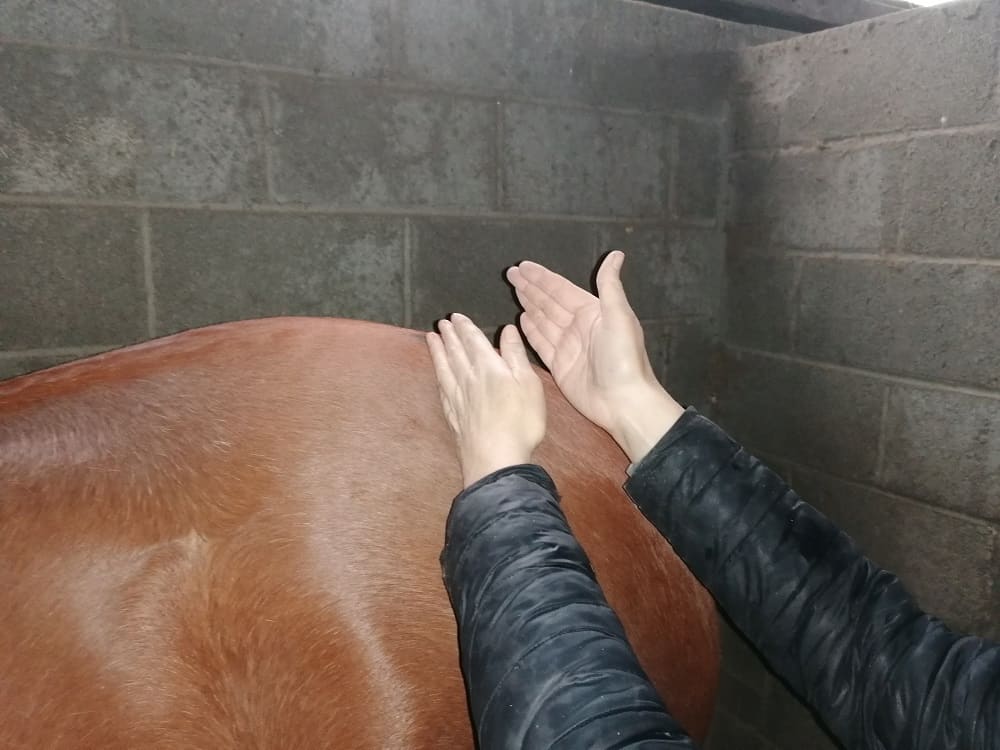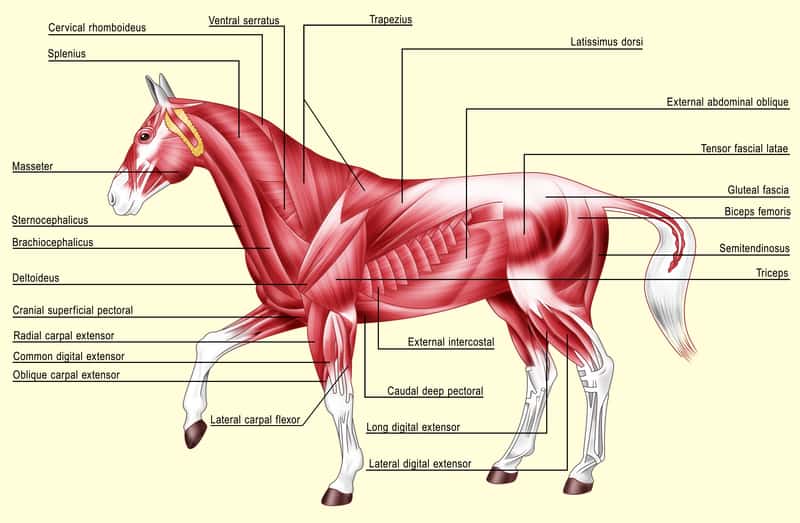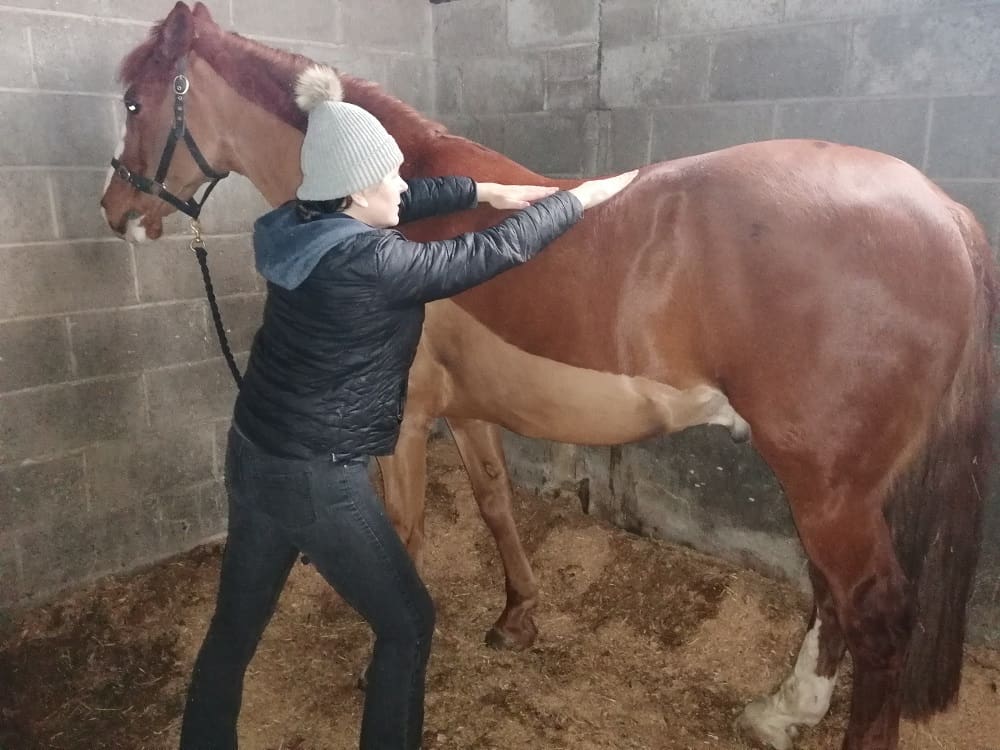Massage is a very useful tool to add to your Equestrian Toolbox. It can be used to help your horse stay flexible and supple, which will only enhance your work together. Plus if you become accustomed to giving your horse some gentle massage, you can pick up on problem areas and areas of tension, long before they become evident in your ridden work. So what is Massage and how can you get started?
Massage – A Brief History.
The history of massage dates back to around 3000 BC, and it is probably one of the most widely used forms of manual therapy down through the centuries. Most modern forms of massage find their roots in Swedish Massage, which was developed by a Doctor and Gymnast Per Henrik Ling, who discovered the benefits of Holistic Massage to his own improved flexibility, suppleness and general well being, when in China.

Massage on Animals
It is thought that experiments into the physiological effects of massage on animals began as early as the 1800’s. However, it’s use as a therapy for animals did not become more wide spread until about the middle of the 20th Century, most likely due to the fact that horses were now used for sporting activities, and it was obviously found that massage was extremely beneficial to their performance, similar to human athletes In fact Jack Meagher a Sports Therapist began using his form of massage to improve the performance of horses in the USA in the latter part of the 20th Century.
What does Massage Work on.
Massage is delivered to the external surface of the body, directly via the body’s largest organ, the Skin. However, the techniques used work not only to improve the skin, but the muscles, and soft tissues beneath the skin, improving flexibility and suppleness, while also improving the circulation of the blood, and the removal of wastes via the Lymph.
What are the basic Massage Techniques
There are 5 basic Massage techniques that are used in various ways to improve circulation, restore flexibility and suppleness in the muscles. These are as follows;
- Effleurage,
- Petrissage/Compression,
- Friction,
- Vibration,
- Tapotement or Percussion.
We will outline the uses of these various techniques before we go through the basic Massage Routine for your horse.
Effleurage

These are gentle long, sweeping strokes applied to the length of a muscle. The purpose of Effleurage is to warm up the area being massaged and get the patient, in your case your horse, comfortable with your touch. Effleurage is also used at the end of the massage to calm the muscles following the work that has been done.
Petrissage/Compression

This is a deep kneading stroke, it’s purpose is to break down any tight areas within the muscle, improving circulation and blood flow. I personally find compression much better for horses, which I perform by using long strokes similar to effleurage, but with a little more pressure to stretch and release a tight muscle.
Friction

This technique is used when there is excessive tension, or a spasm in the muscle. Known as Cross Fibre Friction it is often used on particularly tough areas of tension within the muscle. Friction can be performed by using 2 fingers one on top of the other, working back and forth across the tight muscle fibres, breaking up any adhesions and improving flexibility within the muscle. This can be very painful for the horse, so caution must be used.
Vibration

This is used to shake up and get moving very restricted areas, so that circulation will be improved even in the deepest part of the muscle. I use this for large muscle groups such as the Gluteals. I prefer to do Vibration with one hand on top of the other, and vibrate the muscle by moving my two hands together as one. I maintain contact with the muscle while I am vibrating it. I pick a couple of areas of the muscles that I want to loosen up, and finish the area with some compression followed by some light effleurage.
Percussion/Tapotement

This is used to wake the muscle up again after the massage. Again caution must be used with this as a treatment for horses, as some horses may not be too keen on the first occasion that you use it. It is normally performed as Hacking or Cupping see diagram above.
Before You Start.
Although we have explained the basic equine massage techniques, for the purpose of this basic massage treatment, we will be working primarily with Effleurage accompanied by a small amount of Petrissage/Compression with your strokes. This is to allow you to develop your feel for the muscles, and what is normal for your horse.
Muscles of the Horse.
For this Basic Massage Treatment, you will be working on the superficial muscles of your horse see the diagram. Below:

Step 1

Starting on the near side of the horse, get a comfortable wide leg stance similar to when you are grooming, better with one leg slightly in front of the other. Starting at the top of neck behind the ear; taking long brushing type strokes with your hands one after the other, as if you are brushing the top of your horse’s neck using your hands, working down to the base of the neck. Starting back up behind the ear, gently come down the bottom of the neck into the front of the shoulder as in the diagram.
Step 2

In the next step continue on with the effleurage over the shoulder and chest, gently working the front legs upwards toward the heart.
Step 3

Begin working from the wither area, working the whole barrel of the horse, starting very gently along the length of the back, then on to the ribs and girth area. While working along the back it is best to keep about 1 hands width away from the spine. Always watch your horse and go slowly, be on the lookout for areas of tension that you may come across.
Step 4

Stay working with your Effleurage over the quarter of the horse, making sure to include the hamstrings (back of the quarter) and the quads(muscles front of limb into stifle joint.) Again for the lower legs work gently upward toward the body.
Step 5.
Repeat the process on the offside of your horse.

Common Areas of Tension
- Behind the Ear, The superficial muscle which sits on top of the Atlas the Splenius can get quite tight. Its normal action is to lift the head or flex the neck laterally. If the horse is having bitting or teeth issues, this muscle can become tight and sore. Cross fibre Friction can be beneficial to its release. NB** – This area can be very tender, so only use very gentle pressure as you are learning.
- Brachiocephalic origin Nucal Crest and Atlas, insertion into the front of the shoulder. This muscle acts to draw the forelimb forward, extend the shoulder and also flex the head and neck. Both origin and insertion can be tender, which can be result of foot problems or the horse having worked on hard ground.
- Triceps – This flexes the shoulder joint and extends the elbow. It can be an area of tension, especially if you have found tension in the Brachiocephalic muscle.
- Thoracic Part of Serratus Ventralis – This is one of the Thoracic Sling muscles, when it is over tight, you horse may be grumpy when tightening the girth.
- Longissumus Dorsi – Along the spine, this muscle runs from the pelvis to the lower neck and is responsible for extending the back and neck and lateral flexion. If it is over tight, the horse may ride hollow or appear cold backed.
- Hamstrings- The hamstrings run down the back of the quarter, and are responsible for extending the hip and the hock. They can become tight especially in the showjumper or event horse, and the horse will appear to have a shorter stride behind than normal when they are over tight.
Developing Your Skill
In the early stages of your massage journey, go gently and work on developing your sense of feel for what is normal for your horse. Remember to keep an eye on your horse as they will show some sign when you have reached a problem area. Keep a note of the areas, and when the effleurage is complete, you can work on the problem areas with some gentle petrissage or compression to break up any adhesions. Cross Fibre Friction may also be used, but remember to be gentle and take things easy as you develop your skill.
You can complete your Basic Massage Treatment with some effleurage to relax the area once more.
Common Reactions of Your Horse During Massage.
- Horses can become angry especially if they are very tight, so go lightly and work within their comfort levels.
- Licking and Chewing are common positive reactions
- Yawning and Sighing also denote that your horse is relaxing.
- While blinking and falling asleep show that your horse is really enjoying his spa day.
If you found that your horse was very tight during the massage treatment, give him a couple of easy days post his treatment to help his body adjust. I normally suggest hacking out for a few days post treatment so that the horse has time to recover.
When you begin to massage your horse regularly, he will become more flexible and supple and you will begin to see a big difference in your work together.
This Article was originally published in the March 2021 Issue of Irish Sport Horse Magazine. Picture Copyright is under each individual image.
